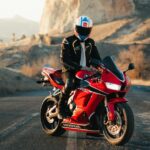Becoming a comfortable motorcycle passenger is not just about sitting back and enjoying the view – it requires awareness, the right equipment and a few essential skills. According to a 2022 report from the National Highway Traffic Safety Administration (NHTSA), 18% of motorcycle fatalities involved passengers, highlighting the importance of proper preparation, posture and communication when on the road.
Interestingly, this is a topic quite close to my heart. As many of the readers know, I only write about motorcycles but I do not operate them. Motorcycling is an experience I share with my boyfriend, where I enjoy the wind in my hair (figuratively of course, I wear a helmet) and he enjoys the actual manoeuvering. I have been a passenger on several bike and scooters, in multiple countries and roads, been squashed by luggage and almost thrown off the back. Who is more qualified to write about this than me – the eternal passenger?
Keep reading for practical, evidence-based advice (including personal experiences) to help motorcycle passengers feel secure and relaxed on every ride.


Essential Riding Positioning for a Comfortable Motorcycle Passenger
The foundation of being a comfortable motorcycle passenger lies in understanding and maintaining the correct posture. Your body positioning has a direct impact on your own stability, the rider’s control and the overall fluidity of the ride. Here are some quick tips on how to improve your positioning as a motorcycle passenger.
- Stay upright but relaxed: Your spine should be straight but not rigid. This reduces fatigue and supports a neutral balance. Avoid slumping which can strain the lower back and make sure you are centred and not leaning to either side.
- Stay close to the rider: Keep your body in light contact with the rider’s back. This helps synchronise movement, especially during turns and braking.
- Knees should hug the tank or side panels: This position provides stability, especially when navigating corners or uneven roads. Also, think about other moving vehicles and imagine the impact on your body if you were hit with your knees wipe open. Ouch!
- Feed should always be on the pegs: Make sure your feet never dangle and are kept planted flat on the foot pegs, ideally with the ball of the foot and with some resistance. Same as your knees, hanging feet are an obstacle and a liability both for you and the rider.
- Move with the bike: Don’t fight the lean. Instead, mirror the rider’s posture during turns. Shifting away from the direction of the curve can unbalance the motorcycle.
- Avoid shifting abruptly: Small movements go a long way. If you need to reposition, let the rider know first and possibly consider stopping the bike. Sharp, unplanned movements can surprise your rider and cause an accident.
- Hold onto the rider or the motorcycle: Hanging hands are a hazard and can upset your balance, especially during accelerating or braking. Make sure to hold onto the rider or the hand grips at all times.

Essential Motorcycle Passenger Safety Gear for Comfort and Protection
Even though you are not the rider, you are not exempt from falls, collisions or the elements by being a passenger. Wearing the right motorcycle gear does more than protect – it enhances comfort. This is especially true on extended rides, areas of heavy traffic or in varying weather conditions. That being said, here is a list of essential safety gear each motorcycle passenger should have for both safety and comfort.
- Helmet: A full-face, DOT or ECE certified helmet is ideal. Look for lightweight models with good airflow and noise reduction. Integrated Bluetooth systems can facilitate better rider-passenger communication versus shoulder tapping.
- Jacket: Opt for jackets with built-in armour and breathable mesh panels. Textile jackets with waterproof liners or removable thermal layers offer year-round flexibility.
- Pants: Riding pants should be abrasion-resistant and feature hip and knee protection. Options include Kevlar-lined jeans, textile pants or leather trousers, depending on your riding style and climate. I would strongly encourage you to avoid bare legs as getting constantly pelted by pebbles during riding can get quite sore.
- Gloves: Use gloves with padding and knuckle protection. Touchscreen-compatible models can be quite useful, although when riding as a passenger, you shouldn’t have free hands to hold a phone – you are holding onto the rider or the bike.
- Boots: Choose over-the-knee ankle boots with oil-resistant soles and reinforced toe boxes. Good boots support your ankles and improve grip on the pegs. At a minimum, I would always encourage enclosed shoes to protect your toes and prevent you from losing a shoe on the road.
- Rain gear and layers: I personally avoid riding during rain and never during snow. This is easier to do for me, however, as I am a passenger who joy-rides rather than uses a motorcycle for travel purposes. Consider rain gear and thermal base layers, even when it looks warm outside. It is always cooler on the bike.
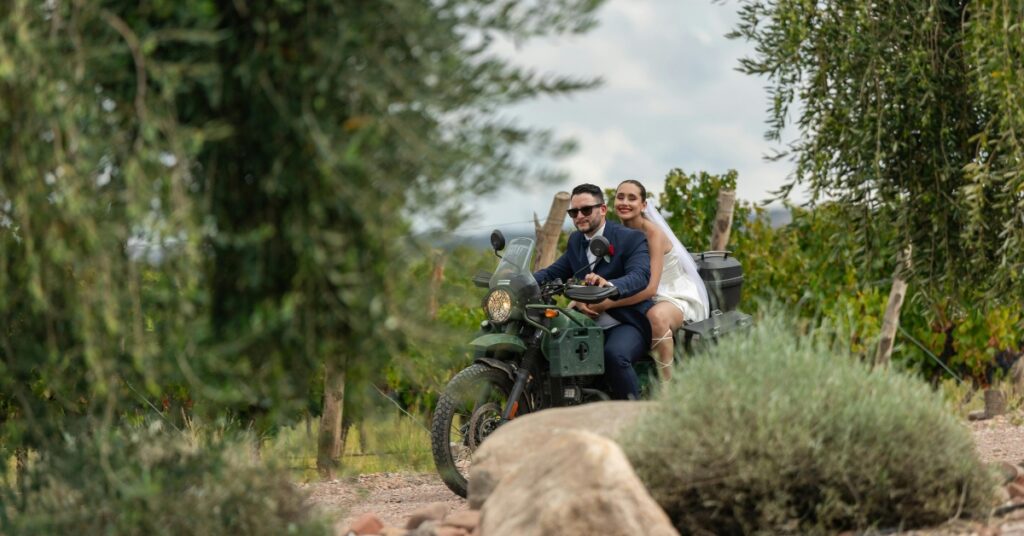
Communication Tips for Motorcycle Riders and Passengers
Clear communication with the rider is essential for safety, trust, a smoother rider and being comfortable as a motorcycle passenger. Knowing what to expect – and how to express your needs – makes you are more confident and comfortable motorcycle passenger. Here are a few tips on how to approach good communication.
Pre-ride discussion
Always discuss the planned route, duration, riding style and expectations. This is especially important if it’s your first time riding with someone, or on new terrain.
Establish hand signals
Set simple, intuitive signals for slow down, stop or emergency. With my boyfriend, I give him a sharp tap on the shoulder to get his attention – a deliberate and precise gesture that would not be a subconscious movement.
Communication systems
Bluetooth intercoms are a game changer for longer riders. They allow real-time voice communication, reducing the need for physical gestures. Consider a helmet with these features especially when touring.
Share feedback
Let your rider know if you are uncomfortable or need a break. Small issues can escalate into big problems, including safety hazards, if ignored.
Enjoy the silence
Know when to stay quiet, especially in high-concentration moments such as merging onto highways or navigating heavy traffic. Personally, unless it is do or die, I zip it tight so I don’t distract my rider. 99% of what you have to say can wait.

Things You Can Request from Your Rider as a Motorcycle Passenger
While passengers can do a lot to improve their experience, the rider also plays a crucial role. To ensure your comfort and safety as a passenger, it is reasonable to ask your rider to:
Avoid hard acceleration and braking
Smooth throttle and brake inputs prevent jarring transitions and allow you to stay balanced. I have almost fallen off the back of a scooter riding around Lake Como, Italy due to hard acceleration – quite the scary experience!
Minimise sudden lean angles
Gradual, predictable turns help passengers stay in sync with the bike.
Give clear cues before manoeuvres
Whether it’s shifting weight before a sharp turn or preparing for a lane change, cues help passengers brace accordingly. (I would add here that cues are more important for unfamiliar terrains or with a new rider. My boyfriend never gives me cues, because nothing really unique happens on our rides).
Avoid aggressive lane-splitting or weaving
Calm, steady riding is best for passenger confidence. We always treat the motorcycle like a car, with ample space in front of and behind us. We also never weave, or do any sudden movements that could surprise other vehicles. I will add, however, in some countries and with experienced riders, I take a more lax approach to weaving. For example, in Bali and the Philippines, if you don’t weave through traffic, you will be the outlier. We are always taught when driving cars to try match yourself to the traffic conditions, so I would say this also applies to motorcycles.
Plan breaks on longer rides
Agree on stop intervals to stretch, hydrate and rest. This is more important for the rider than the passenger due to the focus requires when operating a motorcycle. I can recall many moments when it’s a late summer’s afternoon, the sun is warm, the breeze is mild and I could have very easily napped if I was in a car. Because I am susceptible to micro-sleeps, to be a comfortable motorcycle passenger, I try to avoid riding when tired or in the late afternoons.
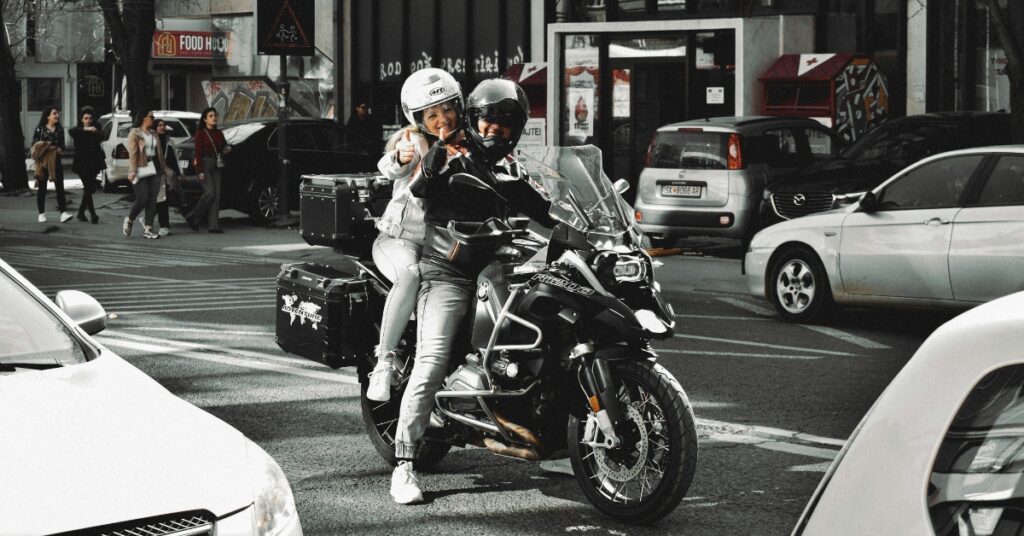
Equipment for Increased Comfort as a Motorcycle Passenger
Did you know that motorcycles can be modified or accessories to significantly improve your riding experiences. A few smart upgrades can get you on track to being a comfortable motorcycle passenger in no time, especially when touring. As someone who has sat on multiple rented bikes and scooters when travelling, I can tell you that a lot of these make quite the difference.
Passenger backrest
This is absolutely essential for me. Backrests provide lumbar support, particularly on cruisers or touring bikes. They reduce fatigue and prevent sliding during acceleration. Once again, I have very much almost fallen off the back of a scooter during heavy acceleration because I did not have back support. It was terrifying! If you don’t have an official backrest, you can put a padded tail box instead – works just as well, at least for short trips.
Seat padding or gel inserts
These add cushioning for longer trips and there are many after market options available for various bike models. If you think this is not that important, you have not sat on a motorcycle for long enough. A few years ago, my boyfriend did a seven week tour along the east coast of Australia from Cairns to Hobart. Even with seat padding, he had to sit on his pillow roped onto the bike due to pain and stiffness (how funny would that have looked!).
Tail boxes with pads
This may be a poor man’s passenger back rest, but some motorcycles are not built to have formal back rests so this works quite well. Storage boxes often come with padded backrests, or you can buy them separately and stick them on afterwards (what we currently have). It makes a world of difference when trying to be a comfortable motorcycle passenger, especially when accelerating and breaking. You’ll be grateful when your spine doesn’t keep crunching up against the plastic.
High-quality foot pegs
Wider or rubberised pegs offer better grip and comfort underfoot. I have not used these myself, but I would like to. Balancing on a small metal peg for a long time makes your calves quite sore. I would like something that absorbs the vibration of the motorcycle as well, so perhaps rubber would be better. Watch this space.
Heated gear plugs
Although we live in Canada, we don’t tend to ride during cold conditions and switch to our cars instead. This could be something helpful, especially if your motorcycle is your main mode of transport in all weather.
Tank grips
These help stabilise your knees during braking or tight turns. I don’t have these as my legs are short and our motorcycle is quite small, so my knees hold my boyfriend’s hips with no contact on metal. They might be better for the rider than the passenger.
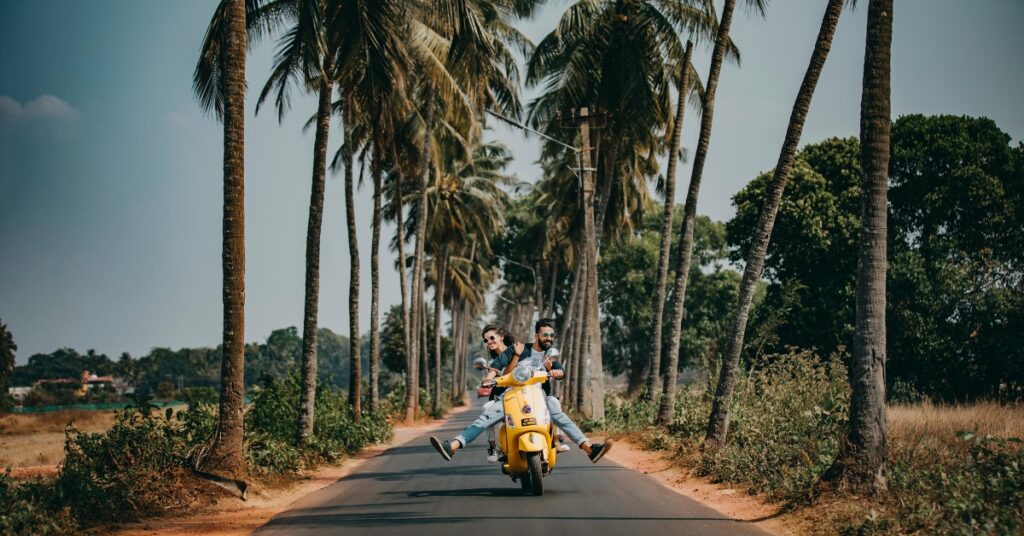
Frequently Asked Questions (FAQ)
Q. Do I need to wear all the same gear as the rider?
A: With absolute certainty! You are not exempt from accidents just because you are a passenger. Motorcycle passengers face the same risks as riders in the even of an accident. A helmet is an absolute must (protect your brain!), followed by proper footwear and then trousers, jackets and gloves. I have some photos online where I am standing next to a motorcycle or scooter in a “cute” outfit. Little did you know, I was most likely wearing jeans and a jacket that I took off right before.
Q. Should passengers lean into turns?
A: Definitely. Make sure to lean with the bike and rider. It can seem counterintuitive, but trying to stay upright in turns can cause imbalance and unsafe handling. It is an instinct you need to fight against. Feel free to watch a YouTube video on centrifugal forces for further clarity.
Q. How can I reduce fatigue on longer rides?
A: Fatigue develops from feeling uncomfortable and/or feeling tired. Make sure to wear supportive gear, use seat padding and maintain good posture to keep your physical self strong. For mental readiness, take breaks sooner or more frequently than you think you need, stretch and stay hydrated. Also avoid riding during certain times of the day when you are more susceptible to micro-sleeps.
Q. Is it ok to talk to the rider during the ride?
A: I would try to avoid talking as much as possible unless it is urgent, a safety concern or you have a helmet with Bluetooth intercom. I am someone who enjoys a chat and points mundane things out on drives like “cute dog”. But when riding with my boyfriend, I say very little so as not to be a distraction. During turns, high-speeds, heavy traffic or technical riding, I say nothing at all. Unless you are about to fall off, everything can wait.
Q. What is the best type of motorcycle for passengers?
A: Touring bikes and cruisers generally offer the most passenger comfort, with wider seats, backrests and better suspension. Sport bikes may be less ideal, especially for long distances.
Q. Can I wear a backpack or small bag?
A: I always do, but I never physically wear it. Rather, I pack my bag into the tail box, or underneath the seat if on a scooter. I have worn cross-body or shoulder bags on very short trips at slow speeds e.g. 5-10 minutes to the beach in Europe, but this is not the norm. This style of bag upsets your centre of gravity at best, and makes you a target for thieves at worst. I never put anything heavy on my shoulder or wear a shoulder bag for trips longer than a few minutes. I am always ready to let go of the bag and risk losing it on the street at any point. Make sure your hands are always free as a passenger, and that you are willing to risk losing anything that is not tied down.
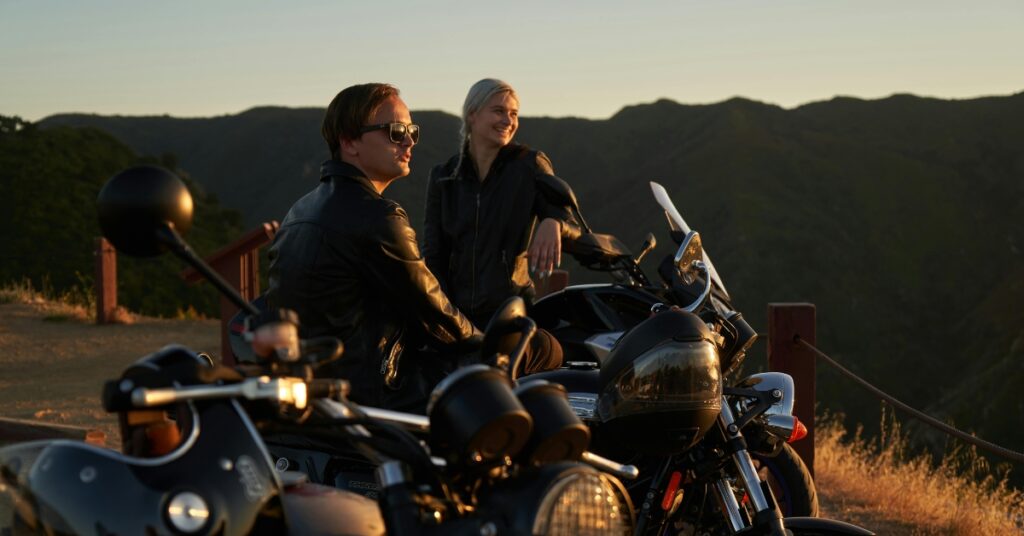
Final Thoughts
Being a comfortable motorcycle passenger in 2025 requires more than just hanging on. It’s a combination of posture, gear, communication and, most importantly, trust. By applying the right techniques, investing in quality equipment and collaborating closely with your rider, you can make every trip not only safe but deeply enjoyable. From someone who is the eternal passenger, I can assure you that the journey becomes exponentially better when both rider and passenger are in sync and travel as a unit. Use this guide as your foundation, get out there and enjoy the ride!





